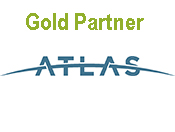FY15 NOAFs Involving Vapor Intrusion
By: Frank Calandra, PE, LSP, Vertex, and LSPA Loss Prevention Committee
Note: After this article was written, the LSPA’s Loss Prevention Committee learned that, through no fault of anyone, it had not received all the NOAFs issued by MassDEP during FY 15. The total numbers of NOAFs cited in the first paragraph of this article are a subset of all FY 15 NOAFs involving vapor intrusion issues.
In the continuing series of articles by the LSPA’s Loss Prevention Committee reviewing MassDEP FY2015 Notices of Audit Findings (NOAFs), this article presents the results of our review of NOAFs associated with vapor intrusion. MassDEP provided the LSPA Loss Prevention Committee with 241 unique NOAFs. Approximately 81 NOAFs contained Notices of Violation and 78 of these resulted in MassDEP issuing a Notice of Noncompliance (NON). Of the 78 audits containing NONs, 11 NOAFs associated with “Vapor Intrusion” were identified. Eight NOAFs were from the Central Regional Office, and three were from the Western Regional Office. None were received from the Northeast or Southeast Regional Offices. Of the 11 NOAFs reviewed, six required the retraction and/or revision of a Temporary or Permanent Solution.
Because vapor intrusion investigation and mitigation inherently involve many other aspects of the MCP (e.g., Activity and Use Limitations, Risk Characterization, Nature and Extent, Immediate Response Actions, Temporary and Permanent Solutions, etc.) this review focuses on two themes that became apparent during the review: audit findings associated with failure to follow vapor intrusion guidance, and with failure to update Substantial Hazard Evaluations.
Audit Findings Associated with Vapor Intrusion Guidance
In three of the NOAFs reviewed, MassDEP cited failure to follow MassDEP Vapor Intrusion Guidance WSC-11-435. In these instances, the specific findings did not explicitly cite failure to follow the guidance as a violation. Instead, the violations were referenced to relevant section(s) of the MCP.
- A Class A-3 Response Action Outcome (RAO) Statement was submitted to MassDEP in December 2013 for a petroleum release at a bulk oil terminal. The Method 1 Risk Characterization, used in support of the RAO Statement, used monitoring data from a single indoor air sample to establish Exposure Point Concentrations (EPCs). The indoor air sample results detected concentrations of xylenes and styrene exceeding threshold values set forth in MassDEP guidance, indicating a potential human health risk, but these parameters were eliminated from consideration as background concentrations related to the site’s use as a garage.
MassDEP notes that a single indoor air sample without additional lines of evidence sampling or technical justification fails to determine a conservative EPC or provide enough evidence to eliminate concentrations as background, in violation of §40.0926(2) and (6). Also noted was that the LSP did not follow guidance, which establishes a weight-of-evidence approach to determine likely exposure potential attributed to migration of subsurface soil vapors into indoor air. In addition to indoor air, soil vapor sampling can be used to demonstrate that no likely vapor migration pathway exists when threshold values are exceeded or other potential sources of sampling interference may exist, such as are likely present inside a garage.
- In the second case, a Class A-3 Partial RAO Statement was submitted to MassDEP in November 2009, followed by a Class A-2 RAO Statement in February 2013, for a release of chlorinated volatile organic compounds (VOCs) at a commercial property. The risk characterization that supported the 2009 RAO used indoor air sampling data from 2009, which detected trichloroethylene (TCE), tetrachloroethylene (PCE), and other VOCs. However, risk characterization in the 2013 RAO relied upon soil vapor and indoor air sample data from 2008, and did not address the 2009 concentrations of TCE, PCE, and other VOCs that exceeded residential indoor air threshold levels set forth in the December 2011 MassDEP Policy WSC-11-435. Among other violations, MassDEP cited failure to provide conservative EPCs in indoor air from TCE, PCE, and other VOCs as required by §40.0926(3) as the violation.
- In the third case, a Class A-3 RAO Statement was submitted to MassDEP in June 2013 for a PCE release at a former dry cleaner site. MassDEP found that soil gas sampling conducted in April 2013 on a public way between the site and a nearby downgradient multi-family residence identified PCE at concentrations exceeding the residential sub-slab soil gas threshold value. Although, MassDEP acknowledged that this sampling point did not represent a sub-slab soil gas sample, it did state that additional assessment of the potential for a complete indoor air exposure pathway at the downgradient residence was needed. MassDEP cited noncompliance with §40.1004(1)(a), which requires that the RAO be supported by assessments and evaluations that are of sufficient, scope, detail and level of effort to characterize the risks posed by the disposal site.
Failure to Update Substantial Hazard Evaluations
Section 40.1050 of the MCP requires that a condition of No Substantial Hazard be documented for Temporary Solutions. Furthermore, §40.0956(1)(b) of the MCP requires that “The period of exposure to be considered shall be equal to or greater than the time from Notification to the date that the Substantial Hazard evaluation is conducted, plus five years.” In three NOAFs, violations associated with not adequately evaluating ongoing vapor intrusion pathways as part of a Substantial Hazard Evaluation are described as follows:
- In one finding, a Class C-1 RAO Statement, a Five-Year Periodic Review of a Temporary Solution, and several Post-Class C-1 RAO Status/ Temporary Solution Status reports were submitted for a commercial/industrial property. MassDEP noted that indoor air monitoring data were not collected over the period following the Class C-1 RAO Statement submittal to update the Substantial Hazard Evaluation. MassDEP indicated that sub-slab soil gas and indoor air collected in October 2007 to support the RAO indicated that a potential human exposure pathway from vapor intrusion to indoor air existed. Therefore, a quantitative evaluation of risk to human health was warranted as part of the Five Year Periodic Review of the Temporary Solution. MassDEP found that the failure to demonstrate that a Condition of No Substantial Hazard exists to support a Temporary Solution is a violation of §40.0956 (Substantial Hazard Evaluation), §40.1004 (Performance Standards for Response Action Outcomes/Permanent and Temporary Solutions), §40.1050 (Temporary Solutions), and §40.1051 (formerly Categories of Class C Response Action Outcomes).
- In the second example, a Remedy Operation Status (ROS) submittal supported by a Substantial Hazard Evaluation was submitted to MassDEP in 2006 for a release of chlorinated VOCs at a commercial/industrial property. The Substantial Hazard Evaluation was based on 2006 indoor air sampling that identified concentrations of TCE ranging from 101 µg/m3 to 190 µg/m3. Subsequent to the filing of the ROS, MassDEP issued a guidance Fact Sheet “TCE Toxicity Information: Implications for Chronic and Shorter-Term Exposure,” updating toxicity factors for use in the evaluation of chronic exposures under the MCP. Based upon the updated toxicity factors for TCE, a workplace indoor air concentration of equal to or greater than 24 µg/m3 was established as an Imminent Hazard Value for women of childbearing age due to the potential for fetal developmental effects; a workplace indoor air concentration of equal to or greater than 80 µg/m3 was established as an Imminent Hazard Value for all workers.
A 2014 ROS Status Report relied on the indoor air sampling and Substantial Hazard Evaluation conducted in 2006. The 2006 Substantial Hazard Evaluation had not been updated to address changes in TCE toxicity values and to revise the exposure period or to evaluate for an Imminent Hazard requiring an Immediate Response Action pursuant to §40.0426(1).
- The third NOAF is related to a 2009 Class C-2 RAO Statement for a former gasoline station. MassDEP found that sub-slab soil samples had not been collected from the former automotive building since 2009. MassDEP concluded that failure to continually demonstrate that a Condition of No Substantial Hazard is maintained is a violation of §40.0956 (Substantial Hazard Evaluation).
The violations identified in the remaining NOAFs generally included various failures to completely evaluate the vapor intrusion pathway with violations related to nature and extent, Temporary and Permanent Solution performance standards, and risk characterization. The latest version of the Vapor Intrusion Guidance is provided on the MassDEP BWCS Site Cleanup and Policies page and can be downloaded here.
Given the number of findings associated with Substantial Hazard Evaluation, it appears that the requirements of §40.0956(1)(b) regarding the period of exposure may often be overlooked.

































